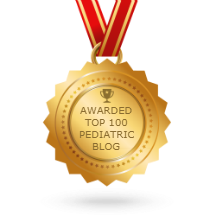The Pediatric Insider © 2009 Roy Benaroch, MD
Count on routine media outlets to mangle and misinterpret science news and information. The recent brouhaha over the Gardasil vaccine is a typical example of how science writers in big media are far more interested in making a splash than in conveying accurate, useful information.
On August 19, 2009, the Journal of the American Medical Association published “Postlicensure Safety Surveillance for Quadravelent Human Papillomavirus Recombinant Vaccine”, a study reviewing adverse events following administration of Gardasil. That’s Merck’s vaccine designed to prevent infections with the virus that causes genital warts and cervical cancer.
The article was pre-released 2 days early to news outlets, though not to physicians. As is typical, doctors don’t get to read these studies until after “the news” folds, spindles, and mutilates the story for a few days. By the time most physicians get to actually read the report, the news has moved on to some other crisis.
Some headlines, reflecting how the study was reported:
Using the resources of my crack research team (I asked the librarian at Children’s Healthcare of Atlanta to send me a copy of the article, and I read it this past weekend), I can now reveal what the JAMA article actually said. As always, you can depend on me for true Pediatric Insider information.
But first, some required boring background information: infections with Human Papilloma Virus (HPV) are the root cause of genital warts and cervical cancer. This is by far the most common sexually transmitted disease, with almost 80% of US adult women having been infected at some point in their lives. Though most infections with HPV are successfully cleared by the immune system, some infections remain active for a long time, and can eventually lead to serious problems. The virus can also more rarely cause throat and oral cancers, anal problems, and nodules in the respiratory tract of babies that lead to serious, even fatal, respiratory problems.
In 2006 the FDA approved a vaccine called “Gardasil” that had been shown to prevent infections by 4 of the nearly 100 strains of HPV. These four were among the most common strains to cause cancer and warts, and probably account for about 70% of cases of cervical cancer in women.
The study reviewed all side effects reported to the Vaccine Adverse Event Reporting System, a passive government database. Anyone can report side effects to this database, including representatives from Merck (they reported more of the side effects than anyone else), medical personnel, or patients. Any sort of side effect can be reported at any time—the database is meant to cast as wide a net as possible, to collect any possible side effects.
About 23 million doses of Gardasil had been administered during the 2 ½ years of the study period. During that time, 12, 424 adverse events were reported, meaning one in 1850 doses. The most common reactions were fainting (14%), dizziness (14%), nausea (9%), and headache (8%). Of the 12,424 adverse events, 772 were considered “serious”—including allergic reactions, blood clots, and neurologic manifestations. That’s one in about 30,000 doses.
Press reports about this study invariably focused on deaths. The most widely quoted number was 32 deaths reported in the study; of those, 8 were second-hand reports that couldn’t be verified, and 4 didn’t include identifying information. There were 20 verified deaths reported to VAERS for which medical records could be reviewed. The cause of death among these 20 were:
- 4 – unexplained
- 2 – complications of diabetes mellitus*
- 1 – prescription drug overdose*
- 1 – amyotrophic lateral sclerosis (Lou Gehrig’s Disease)*
- 1- bacterial meningitis*
- 1 – influenza*
- 3 – pulmonary embolism; two of the cases were also taking contraceptive pills, a known risk factor for clotting. One of these was also a complication of diabetes mellitus (another cause of PE), but it’s unclear whether that person was also on contraceptives.*
- 6 – cardiac causes including arrhythmias
- 2 – seizures
(These total 21 because one reported case had 2 of these conditions.) I starred items that are clearly related to pre-existing or unrelated cases, though in some instances like the 2 with seizures, it’s not clear whether this was a preexisting problem or not. But liberally counting the ones that might have been caused by Gardasil, there were 12 deaths. Among 23 million doses. That’s one in about 2 million.
And it’s not at all clear that even these 12 deaths were in any way related to Gardasil. Though it seems heartless to say so, there are always some deaths among any group of people, even healthy young adults. I couldn’t find an exact expected death rate for women aged 9-26 (that’s the ages where Gardasil is licensed), but just for comparison I did find the death rate for teenagers 15-19—nationwide in the US, it’s 65 per 100,000 per four years. Assuming ~ 10 million different women got Gardasil over the 2 ½ year period of the study (each patient is supposed to get 3 doses, but most in fact get only 1 or 2), if the death rate of 9-26 year old women is the same as the death rate of 15-19 year old teens (or at least in that ballpark, which is reasonable to assume) then you’d expect (2 ½ * 65 * 10,000,000)/(100 000*4) deaths during the study period, or 4065 deaths. Even if you assume about ½ of these were from car accidents, homicide, and suicide (these are the leading causes of death at that age, though violent death is more common in males), that would still mean you’d expect about 2,000 deaths to be reported.
2,000 deaths expected. But only 32 were reported. This is good news, right? From a statistical point of view, the reported deaths were very much within the rate of deaths that’s expected—in fact, it was far, far lower.
Now, there are some reasonable criticisms of the study. It’s entirely possible that some deaths went unreported—this is a passive system, and someone has to take the time to report deaths. However, after such a dramatic and serious event as a death you’d think at least most families and physicians would make a report. But let’s even assume that only 1 in ten deaths was reported—even then, if there really were 320 deaths rather than 32, that’s still far less than the expected ballpark “background” death rate of 2,000.
Though press reports concentrated on the reported deaths, when you look at the study and the actual numbers the only reasonable conclusion is that there is no increased risk of death after vaccination with Gardasil. Oddly, few of the mass-media outlets reported the study that way.
Of the 772 reported serious reactions, many were self-limited, and many, like the deaths, were clearly not related to vaccination. Clearly, however, this are some true side effects; like any medical intervention, Gardasil has both risks and benefits. But it’s good to know that serious reactions are so rare.
Of the adverse events that did occur at relatively high rates, fainting is one that we ought to be watching out for. If a girl faints after a dose of vaccine, she can fall and hit her head or otherwise injure herself—in fact, that was the most common of the 772 “serious” side effects, an injury after a fall following fainting. For this reason, Gardasil should be administered while the patient is lying down, and afterwards it’s a good idea to stay lying down for about 5 minutes. Note that teenagers, male and female, are apt to faint after other vaccines, blood draws, and other medical procedures, so lying down after any sort of shot is probably a good idea.
There are some important questions about Gardasil that still need answers. It’s unclear how long protection will last, and it’s unclear how Gardasil immunization will effect rates of cervical cancer many years later—those studies just haven’t been done yet, because they take so much time. Reasonable families, given these unknowns, may have misgivings about immunizing now against a disease that shows up so much later. Gardasil vaccination is also very, very expensive—at least $400 for the three doses, and considering that cervical cancer is not common, and can be screened for with pap smears, there may be better uses for these health care dollars. Still, from a safety point of view, the recently published study is very reassuring, and very good news for families considering this vaccine. Too bad many in the press didn’t bother to get their facts straight to present the study in a truthful manner.
















Recent Comments